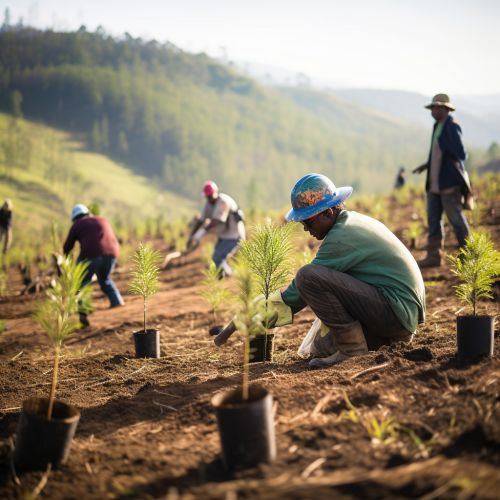Forestry Science
Introduction
Forestry science, also known as silviculture, is the science and practice of managing and cultivating forest ecosystems. This discipline encompasses a broad range of activities, including timber harvesting, wildlife habitat management, and forest restoration. Forestry science is a multidisciplinary field that integrates principles from biology, ecology, geology, and economics to ensure sustainable and responsible use of forest resources.
History of Forestry Science
Forestry science has a long history dating back to ancient civilizations. Early societies recognized the importance of forests for providing timber, fuel, and other resources. The concept of sustainable forestry, however, did not emerge until the 18th century in Europe, when foresters began to implement practices to ensure the long-term productivity of forests.


Principles of Forestry Science
Forestry science is guided by several key principles. These include:
- Sustainability: Forestry science aims to ensure that forest resources are used in a way that meets the needs of the present without compromising the ability of future generations to meet their own needs.
- Biodiversity: Maintaining biodiversity is a critical aspect of forestry science. This involves preserving a variety of species and genetic diversity within forest ecosystems.
- Ecosystem Management: Forestry science recognizes the importance of managing forests as ecosystems rather than just sources of timber. This involves considering the interactions between different species and their environment.
- Adaptive Management: Forestry science involves continually monitoring and adjusting management practices based on new information and changing conditions.
Forest Ecosystems
Forests are complex ecosystems that provide habitat for a wide variety of species. They play a crucial role in global carbon cycling and climate regulation. Forest ecosystems can be classified into several types, including:
- Temperate Forests: These forests are found in regions with moderate climate conditions. They are characterized by a mix of deciduous and evergreen tree species.
- Tropical Forests: These forests are found near the equator and are characterized by high biodiversity and year-round growth due to warm temperatures and abundant rainfall.
- Boreal Forests: Also known as taiga, these forests are found in high northern latitudes and are dominated by coniferous tree species.
Forestry Practices
Forestry practices involve a range of activities aimed at managing and utilizing forest resources. These include:
- Timber Harvesting: This involves the cutting and removal of trees for use as timber. Harvesting methods can vary depending on the objectives of the forest manager.
- Reforestation: This involves replanting areas that have been harvested or otherwise disturbed. Reforestation is critical for maintaining forest productivity and biodiversity.
- Wildlife Management: This involves managing forests to provide habitat for wildlife. This can include practices such as creating snags for bird nesting or maintaining old growth stands for species that require such habitat.
- Forest Restoration: This involves restoring forests that have been degraded due to factors such as overharvesting, fire, or disease. Restoration can involve activities such as planting native species, controlling invasive species, and restoring natural fire regimes.


Challenges in Forestry Science
Forestry science faces several challenges in the 21st century. These include:
- Climate Change: Changes in temperature and precipitation patterns can have significant impacts on forest health and productivity. Forestry scientists are working to understand these impacts and develop strategies to adapt to changing conditions.
- Deforestation: Deforestation, particularly in tropical regions, is a major global issue. Forestry science plays a critical role in efforts to combat deforestation and promote sustainable land use practices.
- Pests and Diseases: Pests and diseases can have significant impacts on forest health. Forestry scientists work to understand these threats and develop strategies for prevention and control.
Future of Forestry Science
The future of forestry science lies in the development of innovative technologies and practices to manage forests sustainably. This includes the use of remote sensing technologies to monitor forest health and productivity, the development of genetically improved tree species, and the implementation of ecosystem-based management practices.
